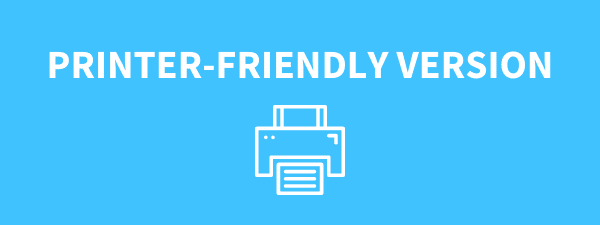 President Biden signed the $1.9 trillion American Rescue Plan Act of 2021 (ARPA) into law on March 11, 2021. Key provisions of this act allow for additional stimulus funds and is the 6th bill enacted by the federal government that focuses on COVID relief. Relief from this bill impacts both businesses and individuals and provides for stimulus payments, tax relief, additional funding for existing programs like the PPP, assistance for state and local governments, and funds to aid in coronavirus testing and vaccination distribution.
President Biden signed the $1.9 trillion American Rescue Plan Act of 2021 (ARPA) into law on March 11, 2021. Key provisions of this act allow for additional stimulus funds and is the 6th bill enacted by the federal government that focuses on COVID relief. Relief from this bill impacts both businesses and individuals and provides for stimulus payments, tax relief, additional funding for existing programs like the PPP, assistance for state and local governments, and funds to aid in coronavirus testing and vaccination distribution.
Individual Items of Note
Unemployment Benefits
Beginning with 2020, ARPA makes up to $10,200 of unemployment benefits exempt from federal income tax. To benefit from this exclusion, the taxpayer’s adjusted gross income (AGI) must be less than $150,000. Once income hits $150,000, regardless of filing status, all the unemployment benefits are taxable. For taxpayers that received unemployment benefits and already filed their 2020 federal income tax return, an amendment may result in a refund.
Additional Stimulus
In addition to the two previous individual stimulus amounts, up to an additional $1,400 per person ($2,800 for joint filers) will be provided, along with $1,400 for each qualifying dependent. More stringent income limits are placed on this round of funds, however, with funds being completely phased out after the below levels:
| Filing Status | Amount Reduced | Fully Eliminated |
| Joint | $150,000 | $160,000 |
| Head of Household | $112,500 | $120,000 |
| All others | $75,000 | $80,000 |
As with the prior version of this credit, ARPA requires the IRS to make advance payments to taxpayers based on either their 2019 or 2020 tax returns, whichever has been most recently filed. If you have not yet filed 2020 returns, the amount will be based on 2019 numbers.
Other Individual Items:
- The 2021 child tax credit is increased from $2,000 to $3,000 per child ($3,600 for children under age 6 at the end of 2021), but with income limitations in force
- The 2021 and 2022 premium tax credit (PTC), which is used to subsidize the cost of Marketplace health insurance, is enhanced with a modified sliding scale of percentages of premiums paid out of pocket and eliminates an income cap, which allows many more people to participate
- Through ARPA, if taxpayer receives excess advances on their PTC during the year, as determined on that year’s tax return, that excess does not have to be repaid. This provision was made retroactive to 2020. If a taxpayer has already filed their 2020 income tax return and repaid some of the advance PTC, they should consider amending the return to secure a refund
- The earned income tax credit is expanded and modified
- The child and dependent care credit is enhanced and made refundable, meaning that a credit that exceeds the amount of tax will result in a refund
Business Items of Note
COVID Leave Pay Credits
The Families First Coronavirus Response Act (FFCRA) required certain employers to pay employees when they were absent due to the virus. It also provided credits to fully reimburse employers. While the mandate on employers ended December 31, 2020, the credits continued through March 31, 2021. ARPA now extends the credits through September 30, 2021 for employers and self-employed individuals.
Note some modifications to the credits:
- The days used for calculating the qualified family leave equivalent amount for those who are self-employed increases from 50 to 60
- The number of days allowed/considered for paid sick leave will reset after March 31, 2021
- COVID-19 vaccination time away is also now considered under paid sick leave
Employee Retention Credit
The ERC credits we have previously communicated about had an expiration date of June 30, 2021, but the credit is now extended through the end of 2021.
Restaurant Revitalization Grants
$28.6 billion of ARPA funds are provided to qualifying entities, such as restaurants, caterers, food stands, food trucks, food carts, bars, inns, taverns, lounges, brewpubs, tasting rooms, taprooms, and alcohol producers “where the public may taste, sample, or purchase products.” $5 billion of these tax-free grant funds are reserved for businesses with 2019 revenues of $500,000 or less. The program runs through December 31, 2021.
Like the PPP, the SBA will administer the program and will be developing rules and creating application forms. We anticipate the release of additional guidance and the opening of the application process in the coming weeks.
Other Business Items:
- $15 billion additional funds for economic injury disaster loan (EIDL) grants and $7 billion of funding for PPP loans
- Employer-provided dependent care exclusion amount increases for 2021 only to $10,000 from $5,000
- 100% COBRA continuation coverage subsidy via a Medicare payroll tax credit for employers for those paying funds out of pocket from the date of the legislation’s enactment through September 2021
- Eligible entities (venues for performing arts, zoos, museums, aquariums, movie theaters, etc.) that are either first or second round recipients of the Paycheck Protection Program (PPP) after Dec. 27, 2020 are also eligible to receive a Shuttered Venue Operators Grant (SVOG). While receiving this grant and PPP funds was previously prohibited, ARPA allows for both to be leveraged, though the amount of the SVOG will be reduced by the amount of PPP funds approved
As always, we have attempted to summarize this bill and offer key highlights, but should you have questions on how this new legislation impacts you or your business, please contact your Smith Leonard advisor.
